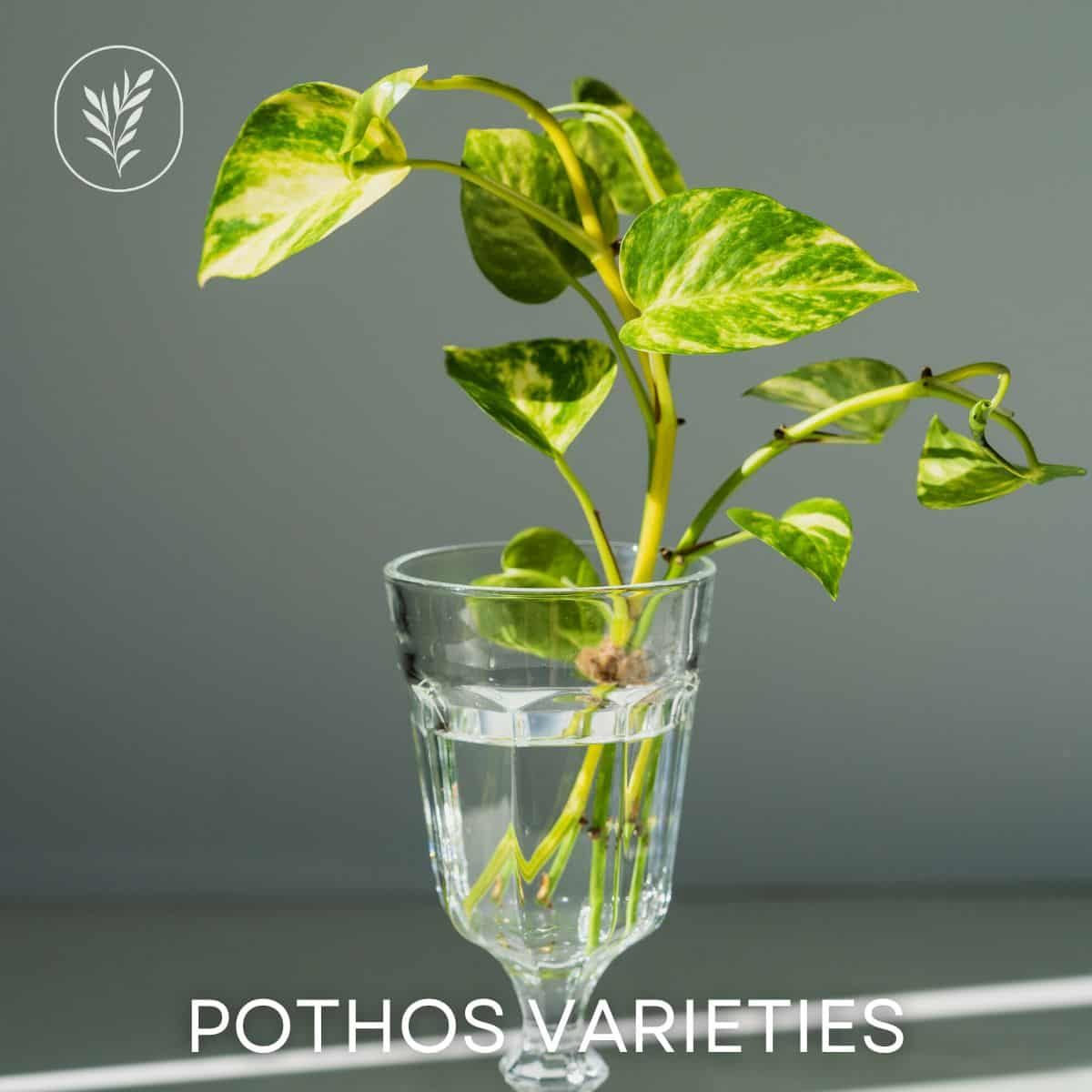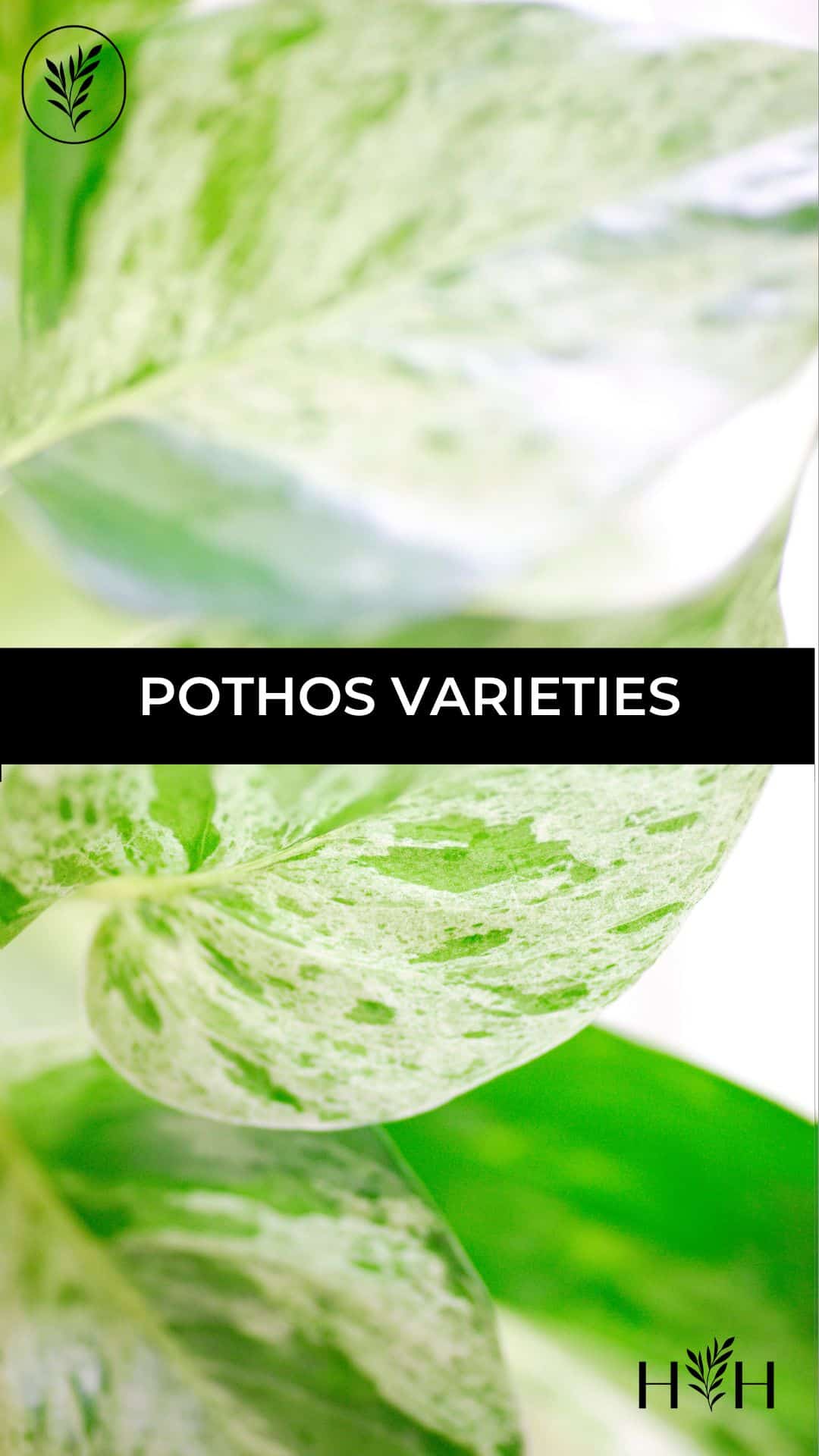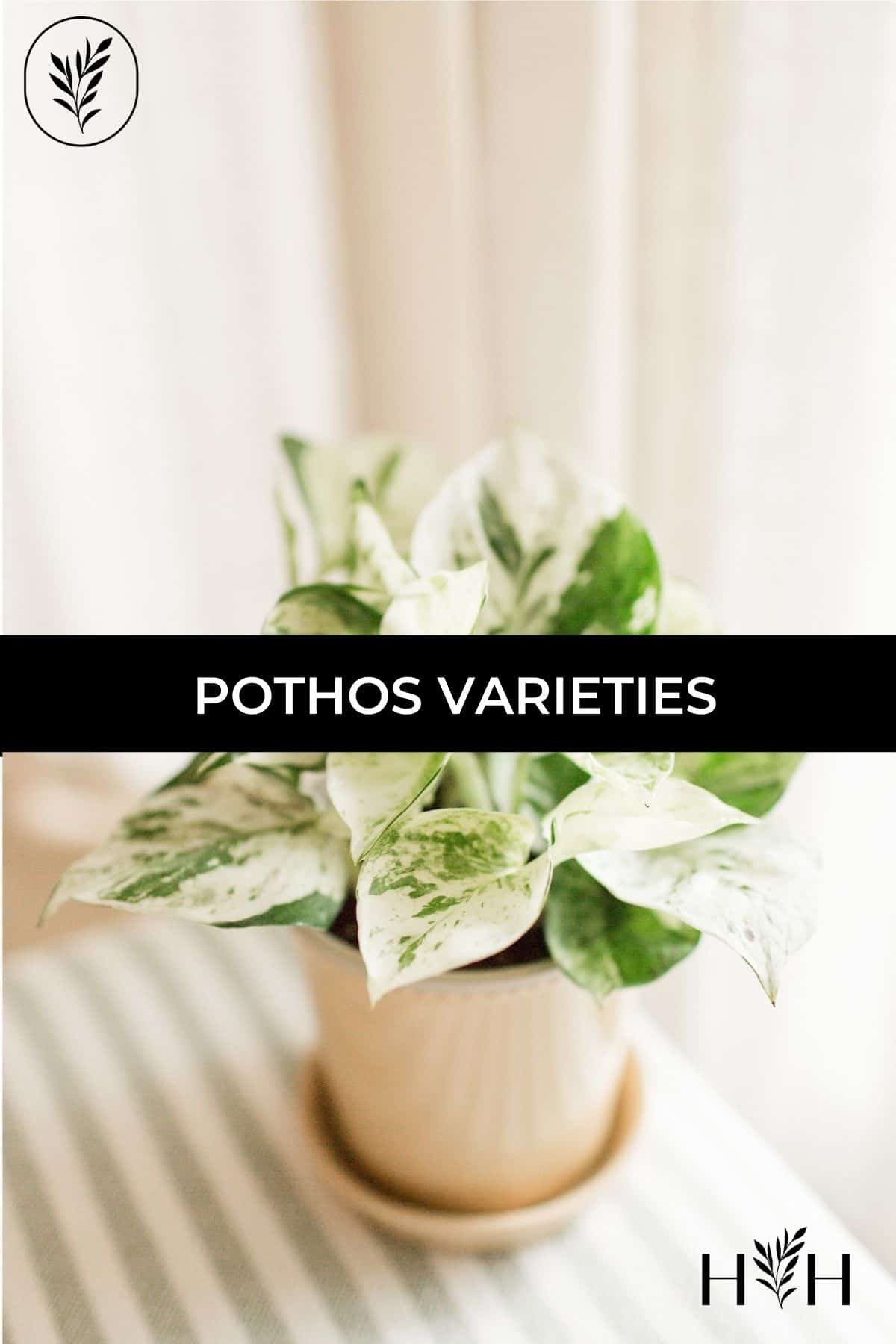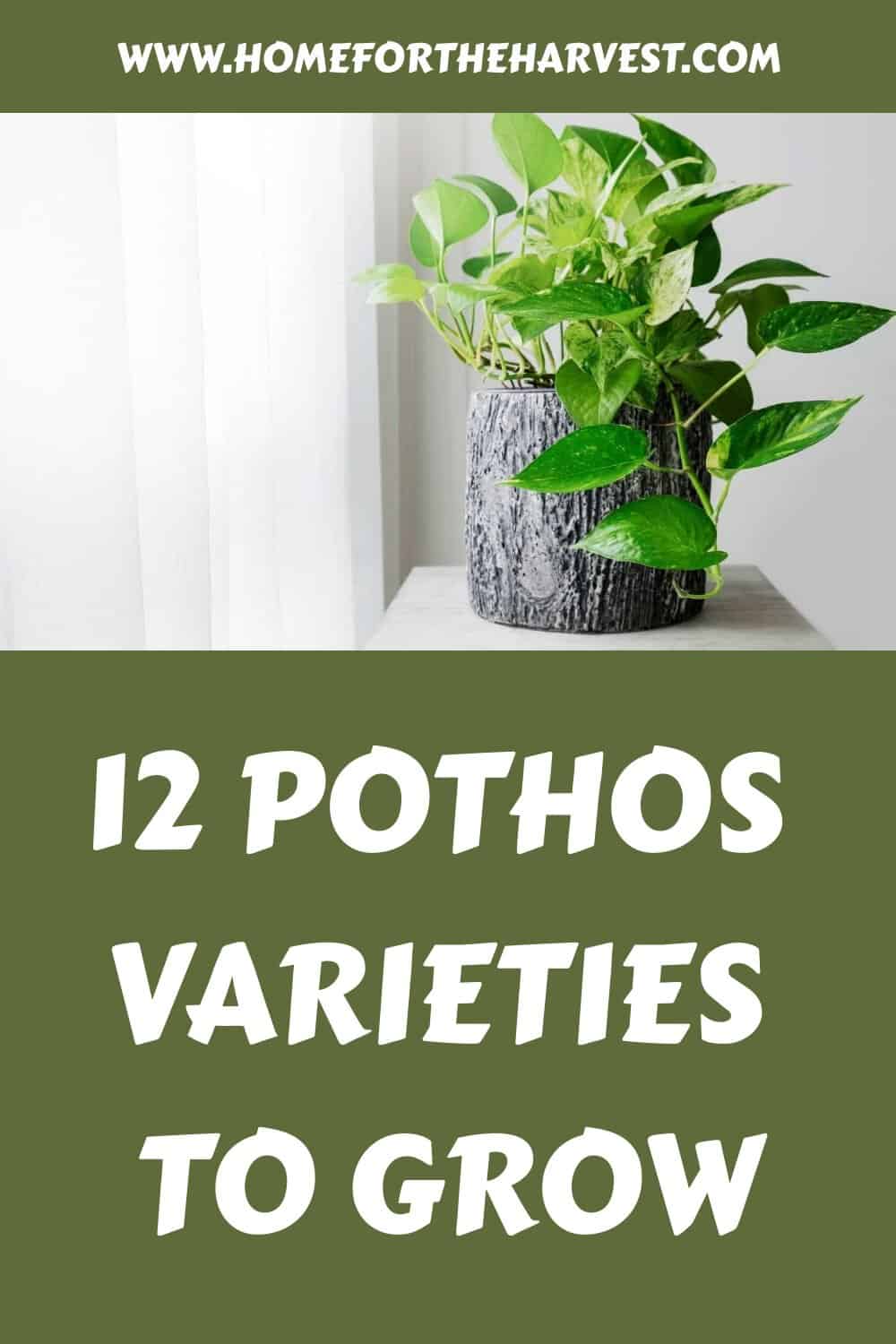On the hunt for a lush, charming, uncomplicated houseplant to add to your plant collection? Pothos plants are the way to go! Pothos are highly variable plants, their colors ranging from white to shades of light green and dark green. They are great vining plants that thrive indoors and can withstand a wide range of lighting conditions. Here is my list of pothos varieties that are sure to adorn your living space.
1. Marble Queen pothos
Marble Queen Pothos has green heart-shaped leaves. These plants have creamy white variegation that requires a bit more light than most varieties to keep their variegated leaves looking vibrant. Marble Queen Pothos grow best in a nutrient-rich potting mix with good drainage.
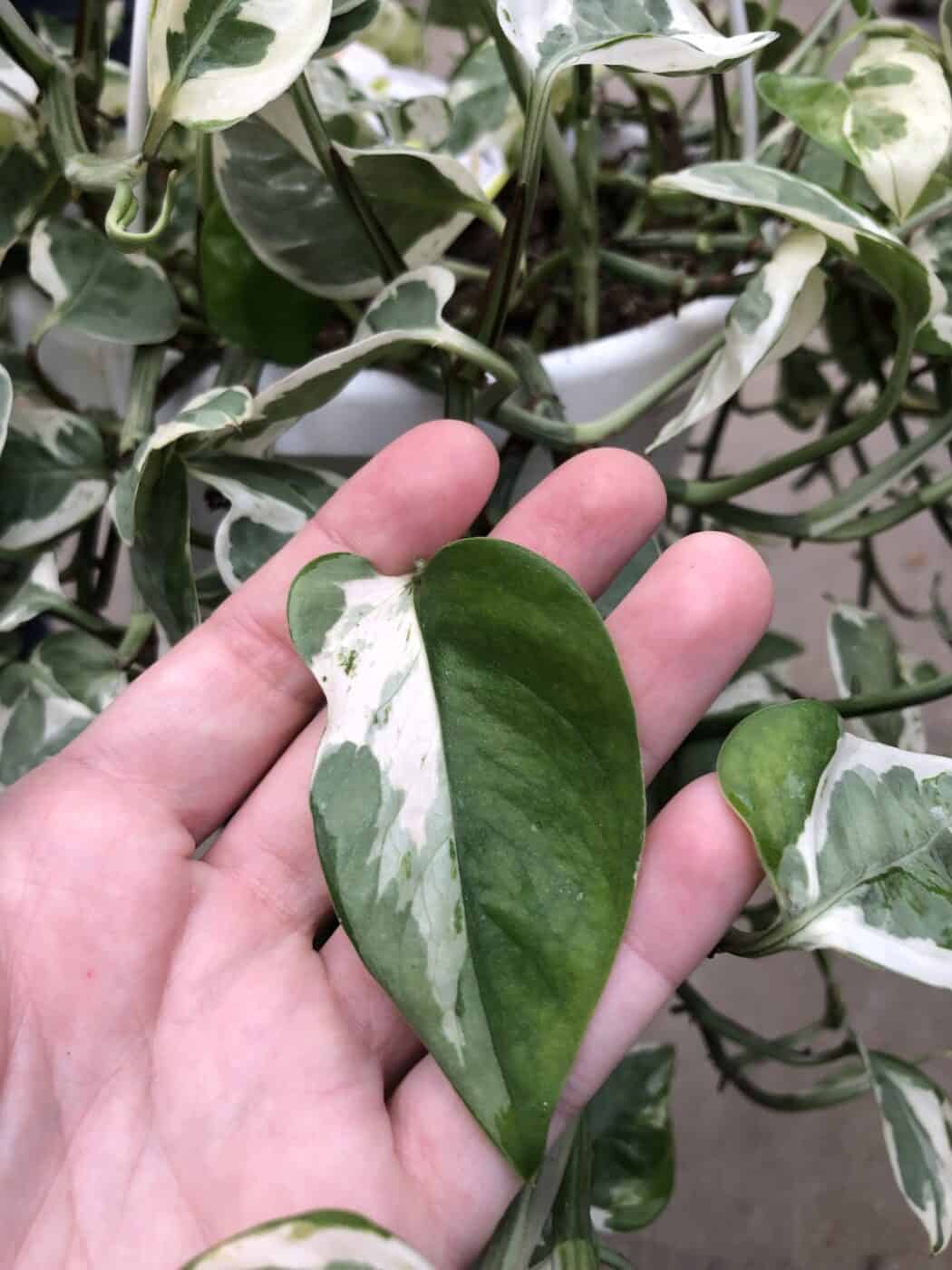
2. Pearls and Jade pothos
Pearls and jade pothos is one of the most popular pothos varieties to grow. At first glance, the foliage can look quite similar to ‘Marble Queen’ plants. However, if you look closely, you will see that the Pearls and Jade Pothos have smaller and thinner foliage with white variegation that occupies the edges of their light green leaves. This pothos plant is a slow-grower and needs medium to bright indirect light.
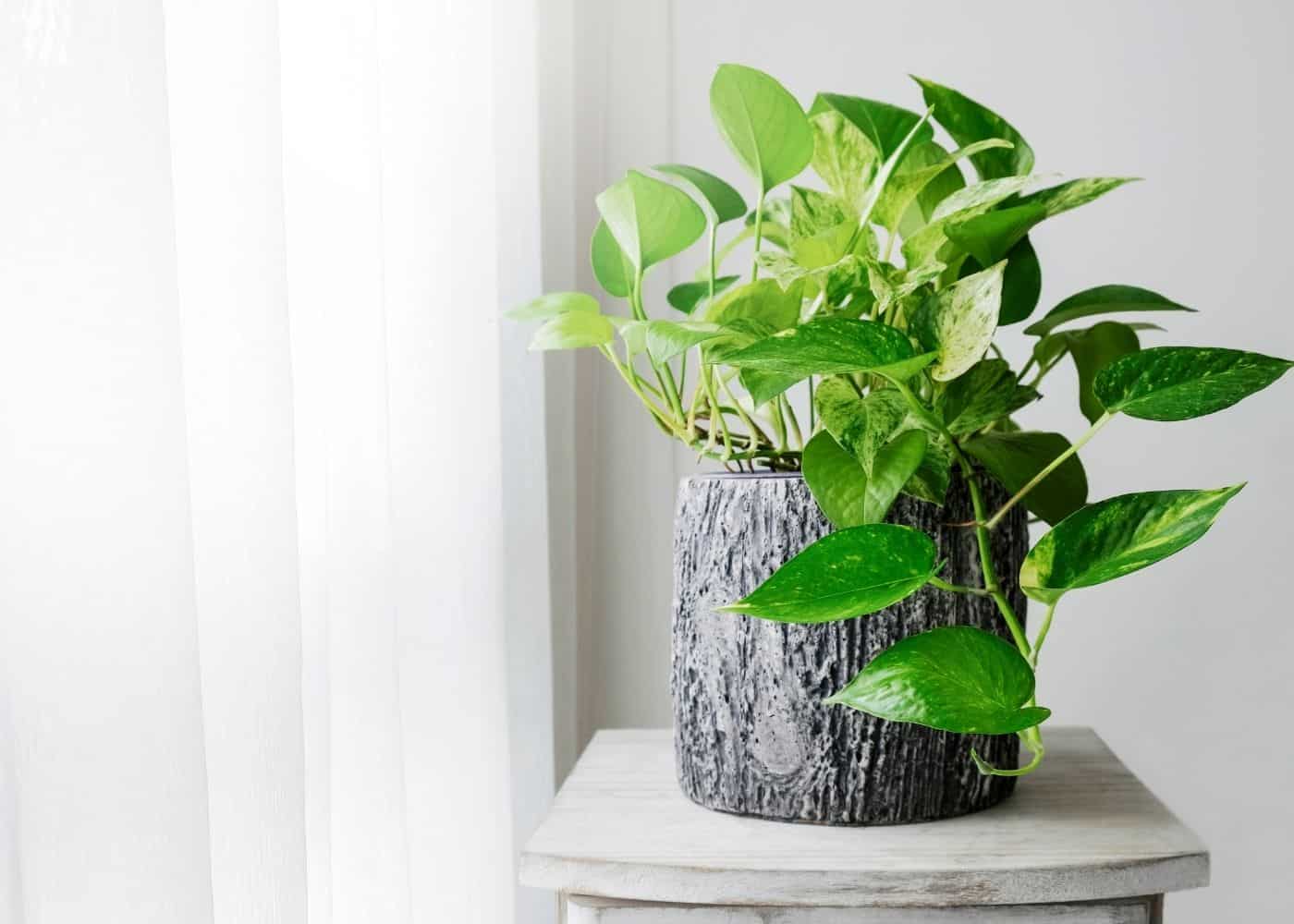
3. Golden pothos
Also commonly known as Devil’s Ivy, this pothos plant grows relatively fast and is nearly impossible to kill – flourishing in very low to bright indirect light. While once thought to be a true pothos, this plant is now classified as Epipremnum aureum. As one of the most accessible pothos varieties, the Golden Pothos is known for its waxy, green heart-shaped leaves with golden yellow variegation.
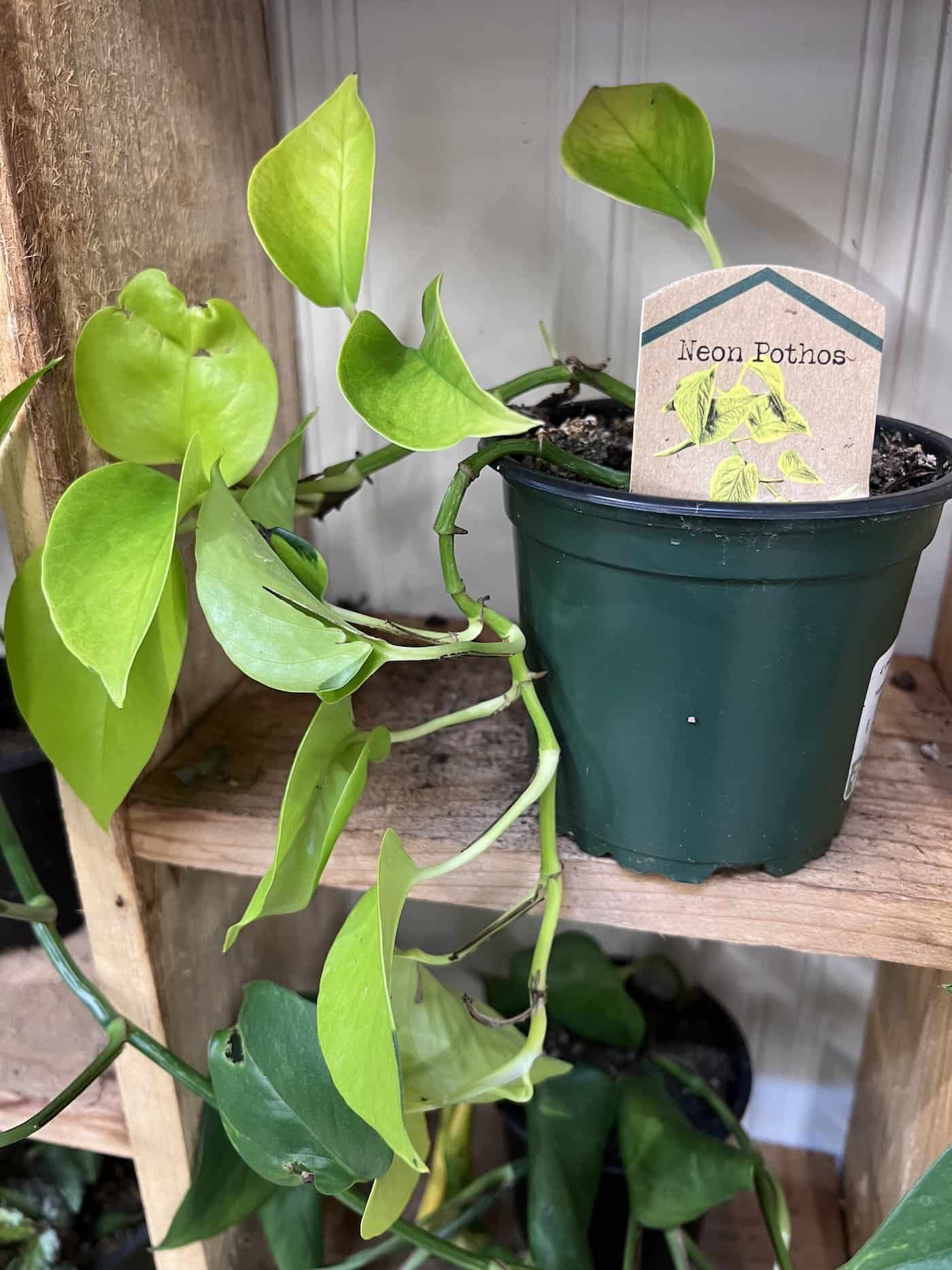
4. Neon pothos
Want to brighten up your home? Then the Neon Pothos is a great choice! Their eye-catching, light green foliage is a beauty to behold. They thrive in medium to bright indirect light and are great for beginners, as they are easy to care for. Neon Pothos are toxic to cats, dogs, and humans when ingested, so keep the plant out of reach of pets and children.
5. N’Joy pothos
The N’Joy Pothos is another of the pothos plants that is easily mistaken for the Marble Queen or Pearls and Jade Pothos. Their heart-shaped green leaves have white variegation that is distinctively solid in color. The other pothos varieties are usually white with speckled green. The N’Joy Pothos are pretty low maintenance. Prune them back when they become leggy and only water when the soil is dry an inch deep.
6. Jade pothos
As the name suggests, the Jade Pothos is known for its jade-green leaves. If you have a home with limited natural light, these pothos varieties will do just as fine in low light! Jade Pothos are commonly planted in hanging baskets for their tendency to trail and cascade, making them a charming addition to any home.
7. Jessenia pothos
The Jessenia Pothos is a lovely mix of green variegation that displays shades of lighter green, medium green, and dark green. To keep the colors as saturated as possible, keep them in a shaded space with medium to bright light. It is best to use soil that contains orchard bark, peat moss, and perlite with some potting soil.
8. Manjula pothos
As one of the rarer pothos varieties, the Manjula Pothos has creamy white leaves with light to dark green variegation. If you want more white on your Manjula Pothos, bring it under bright indirect light to allow it to photosynthesize. The more light your Manjula Pathos gets, the more of a variegated pothos variety it will become.
9. Cebu Blue pothos
Native to the Cebu Islands in the Philippines, the Cebu Blue Pothos have beautiful, blue green leaves that are more silvery and thin compared to other pothos types. Like the Baltic Blue Pothos, the Cebu Blue Pothos’ parent plant is the Epipremnum pinnatum, otherwise known as Dragon’s Tail Pothos. They usually have younger leaves but can also become mature plants quickly when watered regularly.
10. Global Green pothos
The Global Green Pothos is one of the newer types of pothos, becoming increasingly more popular with homeowners and plant collectors alike. Their dark green foliage has blotches of light and deep green, a distribution of coloring similar to the N’Joy and Pearls and Jade Pothos. The leaves are much smaller in size but still just as gorgeous!
11. Snow Queen pothos
As the lightest of all common pothos varieties, the Snow Queen Pothos lives true to its name. Its stunning white foliage and delicate, green variegation dazzle the eyes. To prevent the white color of the leaves from reverting, keep it in bright indirect light. Water it once a week until you see it dr begin to drain from the bottom of the pot.
12. Harlequin pothos
The Harlequin is undoubtedly one of the rarest and most unique pothos cultivars available in the market. Native to South East Asia, the Harlequin Pothos flaunts exquisite white and dark green leaves that are medium in size. This highly variegated pothos will need bright indirect light and a well-draining soil mix to live to its true beauty.
How many of these variegated pothos varieties have caught your eye? If you are as plant-crazy as I am, you might want all of them! These tropical plants are certainly one of a kind and look great anywhere. Whether draped over cabinets, dangling from baskets, or sitting in a pot by the window, you can’t go wrong!


